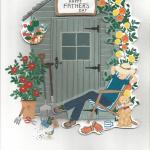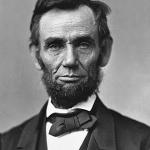Back in 1920, the New York Yankees, who had never won much of anything, acquired a big fellow named George Herman Ruth from the Boston Red Sox for a World Series to be named later (84 years later, to be precise). George Herman had made quite a name for himself with the Red Sox, winning two games in the 1918 World Series, which the Sox took four games to two from the Cubs, and winning a fourteen inning 2-1 pitchers’ duel against the Brooklyn Robins in the 1916 World Series, which the Sox also won. But the Babe had a powerful bat, and the Sox had begun to use him regularly in the outfield. Babe Ruth never cared much what anybody said to him or thought about him, so he went against the common wisdom of the time, which was that batters should slash at the pitch — the “uppercut” was thought to be a loser’s strategy.
The Babe was just beginning to prove that that wisdom was wrong when the Red Sox traded him. He uppercut at the pitch all the time, eventually resulting in a previously unthinkable number of both home runs and strikeouts (and walks, since pitchers didn’t care to leave the ball sitting over the plate when they pitched to him). When the Babe hit 29 home runs in 1919, blasting out of the water the previous record, sports know-it-alls said that it was a one-year fluke. That record would never be broken, they said. Things would return to the old norms. Tris Speaker, the Hall of Fame center fielder for the Red Sox and the Indians, went so far as to say that the Yankees would regret turning Babe Ruth into a full-time outfielder. It was a big mistake, he said. No doubt he was thinking of the Babe’s exceptional record as a pitcher (he finished 94-49).
Well, that record of 29 home runs wouldn’t last long. The Babe would clobber it in his first season with the Yankees, hitting nearly twice as many — 54. He would hit 714 in all, and would revolutionize the game; baseball right now is closer to what it was in 1930 than baseball in 1930 was to what it had been in 1910.
I’d like in the occasional MPE post — Maximum Possible Error — or we might call it the “Who’s Tiresias?” Award for Bad Prophecy — to highlight when people, guessing at the future, get things spectacularly wrong, and for certain predictable (!) reasons. Yes, there are predictable ways in which predictors go wrong in their predictions. The first is the Tris Speaker Assumption of Uniformity: assuming that things which are not rooted in the nature of the world or of man are not going to change. That’s a failure of the imagination, more typically committed by the heedless optimist than by people like Tris Speaker. I’m sure the reader can think of comparable examples — usually in the form, “Don’t worry, this isn’t going to change anything.“











